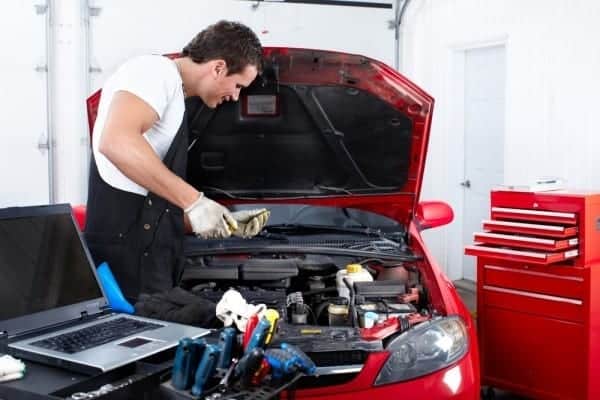Troubleshooting a Transmission to Determine Repairs Needed
Your car is made of thousands of different parts, and one of the most important is your vehicle’s transmission. Your car can limp along with a flat tire, and you can start the vehicle with a jump when the battery is low on juice, but your car won’t move when the transmission doesn’t work.
Here are some simple steps you can take to diagnose your transmission’s malfunctions. The more you know about your vehicle, the faster you can get it repaired and be on your way.
Common Transmission Issues
Some of the common problems you might hear, see, or feel when your transmission needs repair include:
- Clicking noises
- Delayed shifting
- Fluid leaks
- No forward or reverse gears
- Overheating
- Slipping gears
- Whining noises
Interestingly, many of these problems have overlapping causes, as well as common solutions. For example, low fluid levels can cause just about every problem on that list. Transmission service that adds fluid might be all you need to return your car to normal.
Alternatively, bad transmission fluid may also cause many of these problems. Draining or changing the automatic transmission fluid (ATF) may also fix the problem. It’s not uncommon to add or replace ATF as a preliminary step just to see if the problem resolves itself.
Diagnosing Auto Transmission Problems

However, sometimes a code isn’t available for your transmission’s problem, and some additional exploration may be necessary.
When Things Go Terribly Wrong
If you turn your car on and you can’t shift your vehicle into gear or it won’t shift into overdrive when you reach the appropriate speed, it could be dirty transmission fluid or something more serious like a damaged throttle.
While automatic and manual transmissions may have similar problems might differ as far as what can go wrong, there are several problems that require a fix beyond fluid replacement. Your transmission might be leaking because of a problem with the torque converter, so refilling the transmission with fluid won’t fix the problem unless you fix or replace the torque converter.
Issues that seem like a Transmission Problem
Sometimes, it’s a related system in your vehicle that’s causing the problems, and your car isn’t necessarily in need of a transmission replacement. If you drive a standard transmission (also known as a manual transmission) vehicle, a faulty clutch could be to blame.
When you step on the clutch pedal in a manual transmission vehicle, the clutch should move smoothly to allow you to manually shift the car into the next gear. When this doesn’t happen as it should, your clutch may need adjustment, or the clutch plates might be worn down and require replacement.
Don’t Ignore the Problem
A faulty transmission isn’t like a CD player that’s on the fritz or burned-out dome light. If your car starts making strange noises, isn’t shifting smoothly, or isn’t getting into gear with ease, you’ll want to visit My Transmission Experts immediately for a diagnosis.
Don’t risk the need for complete transmission rebuilding when you can solve the problem early with a simple fluid replacement or minor repair of a seal. Keep your automotive repair costs low by caring for your car when it needs help.
CONTINUE READING
Vehicle Warning Light Diagnosis
5 Signs you Might Need a New Transmission
Most Common Transmission Fluid Problems & How to Prevent Them
Schedule Factory Recommended Vehicle Maintenance
Questions to Ask a Mechanic Before Rebuilding a Transmission































